How to Interpret Common Alpaca Herd Behaviors
You’ll notice alpacas use grooming, ear positions, and vocalizations like humming to show calmness and social bonds. Dominant alpacas lead, while changes in behavior or isolation often signal stress or illness. Watching their body language—relaxed tails mean contentment, pinned ears show annoyance—helps you understand their feelings. Herd dynamics shift with new members, so monitoring interactions is key. If you keep exploring, you’ll uncover how these behaviors affect herd harmony and health.
Key Takeaways
- Alpacas form hierarchical social groups where the alpha leads and dominant behaviors indicate rank.
- Social grooming strengthens bonds and signals positive interactions within the herd.
- Vocalizations like gentle humming express calmness, while sharp calls warn of danger.
- Body language, such as ear and tail positions, reveals emotional states like contentment or annoyance.
- Changes in behavior or self-isolation often indicate stress, health issues, or shifts in social dynamics.
Recognizing Normal Social Interactions
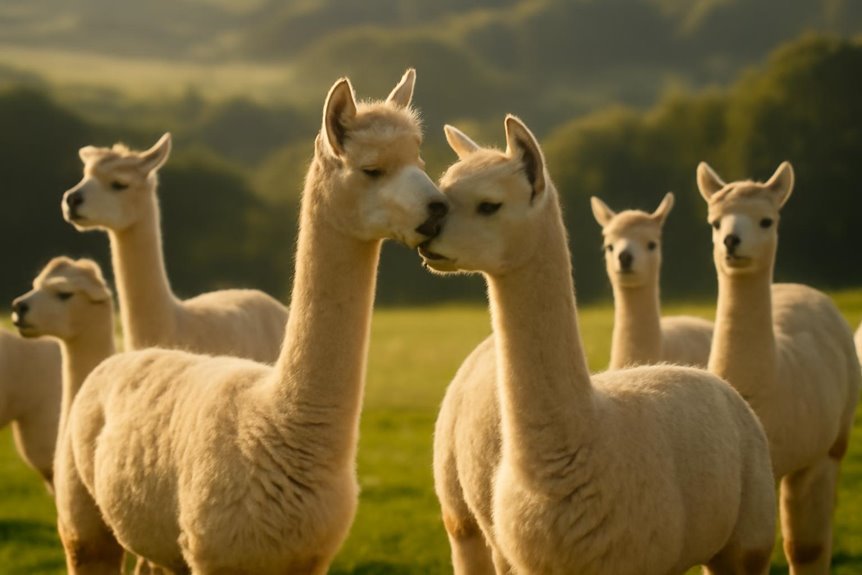
When you watch alpacas interact, you’ll notice they thrive in social groups with a clear hierarchy that keeps peace and order. As herd animals, alpacas rely on this structure to reduce conflicts and maintain harmony. Understanding alpaca behavior means paying close attention to their behavioral cues. The alpha alpaca leads, often displaying dominant actions that guide the group’s dynamics. Social grooming, where alpacas nibble each other’s necks and backs, strengthens bonds and reinforces their social fabric. Vocalizations like gentle humming or sharp calls help communicate emotions and alert the herd to safety concerns. Observing subtle body language—ear positions and tail stances—gives you insight into their emotional state and social roles. Recognizing these normal social interactions helps you better interpret their behavior.
Signs of Stress and Discomfort
Understanding normal social interactions in alpacas sets the stage for spotting signs of stress and discomfort. As an alpaca owner, you should watch for changes in body language, like an alpaca self-separating from the herd, which often signals stress or health issues. Notice if their usual submissive or docile behavior shifts toward aggression; this disruption can indicate discomfort. Also, pay attention to respiratory rates—if they rise above 30 breaths per minute, it might mean your alpaca is stressed or in pain. Changes in dung pile frequency or consistency are subtle clues worth monitoring. By recognizing these signs early through careful observation of body language and behavior, you can address stress and health problems promptly, ensuring your alpacas stay healthy and comfortable.
Vocalizations and Their Meanings
You’ll notice alpacas often hum to express curiosity or contentment, but the tone can change when they’re concerned. Sharp, loud calls usually mean there’s a warning or threat nearby, signaling the herd to stay alert. Paying attention to these vocal patterns helps you understand what’s going on in their world.
Humming Patterns Explained
Humming is the key way alpacas communicate, expressing emotions from curiosity to concern through variations in pitch and intensity. When you hear a gentle humming, it usually means the herd feels calm and reassured, signaling no threats nearby. If the humming is sharper or more intense, it might reflect curiosity or mild worry, helping you understand their mood as they interact with us. To interpret these humming patterns accurately, observe the alpacas’ body language—ears perked or laid back and tail positions offer important clues. The way the herd hums is a subtle yet powerful tool they use to stay connected and convey feelings without alarm, helping you better engage with and care for them.
Warning Calls and Signals
Although alpacas mostly rely on humming to express their feelings, you’ll notice they use sharper, louder calls as warning signals when there’s danger nearby. These warning calls alert the entire herd to potential threats, prompting immediate vigilance. When you hear these sharp sounds, it means alpacas are on high alert and encouraging the herd to stay cautious. Besides vocalizations, alpacas may also use body language or spitting to reinforce warnings or establish boundaries. Understanding these warning calls helps you recognize when the herd feels threatened or uneasy. By paying attention to the intensity and type of vocalizations, you can better interpret the alpacas’ state and respond accordingly, ensuring both your safety and theirs.
Understanding Body Language
When you watch alpacas closely, their body language reveals a lot about how they’re feeling. In an alpaca herd, individual alpacas use ear positions to communicate—ears pinned back show annoyance, while relaxed ears mean calmness. Tail positions also tell a story: a relaxed tail signals contentment, whereas a raised tail indicates excitement or agitation. Neck posture is key too; an upright neck suggests curiosity or alertness, and a lowered neck shows submission or relaxation. Social grooming, where alpacas nibble each other’s necks and backs, highlights bonds and trust within the herd. By observing these subtle cues, you can better understand the emotions and relationships of individual alpacas without needing words, making their silent body language an essential part of interpreting herd behavior.
Effects of Hierarchy on Behavior
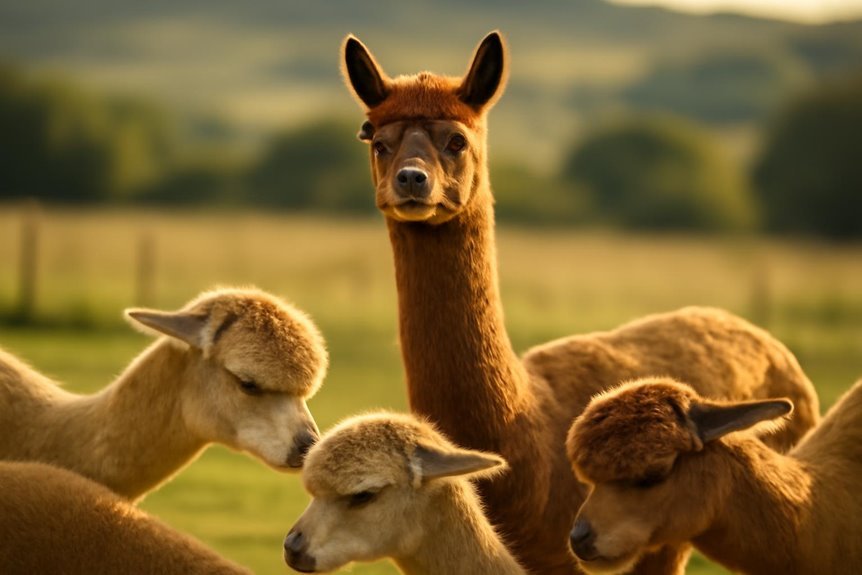
Reading an alpaca’s body language gives you insight into their feelings, but understanding their behavior means looking at how social rank shapes their interactions. In herds of alpacas and llamas, adult alpacas follow a clear hierarchy, often led by an alpha male who influences feeding, resting, and social grooming. Female alpacas also maintain their own rank, which affects breeding success and access to resources. You’ll notice that subordinate alpacas defer to dominants, maintaining order and reducing conflicts within family groups. If an alpaca is separated, it may become agitated, as disrupting the hierarchy unsettles their social roles. By observing these dynamics, you get a clearer picture of each alpaca’s behavior within the herd structure.
Identifying Illness Through Behavior Changes
Because alpacas often hide signs of illness until problems become serious, you need to watch for subtle behavior changes that signal health issues. As owners, paying close attention when you interact with alpacas—especially young alpacas—is essential. Look for self-separation from the herd, unusual vocalizations like groaning or teeth grinding, and shifts in social behavior, such as an aggressive alpaca suddenly acting submissive. Also, monitor their dung piles; changes in consistency or frequency can indicate digestive problems. These subtle signs are often the first clues to illness, so spotting them early helps you intervene before conditions worsen. By staying observant during your daily interactions, you’ll better protect your alpacas’ health and well-being.
The Role of Grooming and Bonding
When you watch alpacas grooming each other, you’re seeing more than just cleaning—it’s how they build trust and keep the herd connected. Mothers especially use grooming to bond with their cria, teaching them social skills and offering comfort. Paying attention to these interactions helps you understand their social structure and emotional well-being.
Social Grooming Importance
Although it might seem like a simple act, social grooming plays an important role in how alpacas bond and maintain group harmony. On alpaca farms, you’ll often see alpacas nibbling each other’s necks and backs, which helps strengthen their social bonds and keeps the herd cohesive. This behavior isn’t just about cleanliness; it has a calming effect, especially on young alpacas who may feel nervous. Social grooming promotes a sense of security and reduces stress throughout the group. When you observe frequent grooming among alpacas, it’s a clear sign of positive relationships and a stable social structure. So, next time you visit an alpaca farm, watch for social grooming—it’s a crucial behavior that keeps the herd healthy and connected.
Mother-Cria Bonding
Social grooming isn’t just about maintaining harmony among adult alpacas; it plays a key role in the relationship between a mother and her cria. When mother alpacas nibble gently on their cria’s necks and backs, they’re reinforcing a crucial bond. This grooming calms nervous cria, helping them feel safe and accepted within the herd. The bonding process teaches cria important social cues and alerts them to potential dangers. You’ll notice mother alpacas are fiercely protective, ensuring their young stay secure. This trust built through grooming strengthens communication between them and supports the cria’s social development. So, when you observe a mother alpaca grooming her cria, you’re witnessing an essential ritual that deepens their connection and promotes herd cohesion.
Monitoring Herd Dynamics Over Time
Because alpacas rely on herd structures to feel secure, keeping an eye on their interactions over time is essential. You’ll notice that herd dynamics evolve, especially when new alpacas join or others leave, affecting the established social hierarchy. By regularly observing behavioral cues like grooming, proximity, and vocalizations, you can identify shifts in relationships or potential problems like bullying or isolation early. Each alpaca has a unique personality influencing its role—whether alpha, follower, or guard—and understanding these roles helps you manage the herd better. Tracking these changes not only promotes harmony but also supports their overall health and happiness. So, stay attentive to subtle social signals to maintain a balanced and peaceful alpaca community.
Frequently Asked Questions
What Is the Behavior of the Alpaca Herd?
You’ll notice herd dynamics in alpacas revolve around a social hierarchy, with communication signals like humming or ear positions guiding interactions. These behaviors keep the group balanced, reduce stress, and help you manage them effectively.
What Are the Behavior Characteristics of Alpacas?
You might think alpacas are quiet, but their vocal communication reveals rich social interactions. Their feeding habits show patience and hierarchy, so understanding these behaviors helps you appreciate their complex, gentle nature within the herd dynamics.
How to Tell if an Alpaca Is Stressed?
You’ll notice stress indicators like self-separation, unusual vocalizations, or pinned-back ears. Consider environmental factors causing discomfort. Use calming techniques such as gentle handling and minimizing noise to help your alpaca relax and feel secure.
What Does It Mean When an Alpaca Puts Its Tail Up?
When you see an alpaca’s tail up, you’re witnessing tail position significance, alpaca body language, and social signaling behaviors. It shows excitement, confidence, or alertness—so watch for context to understand what your alpaca’s really saying.

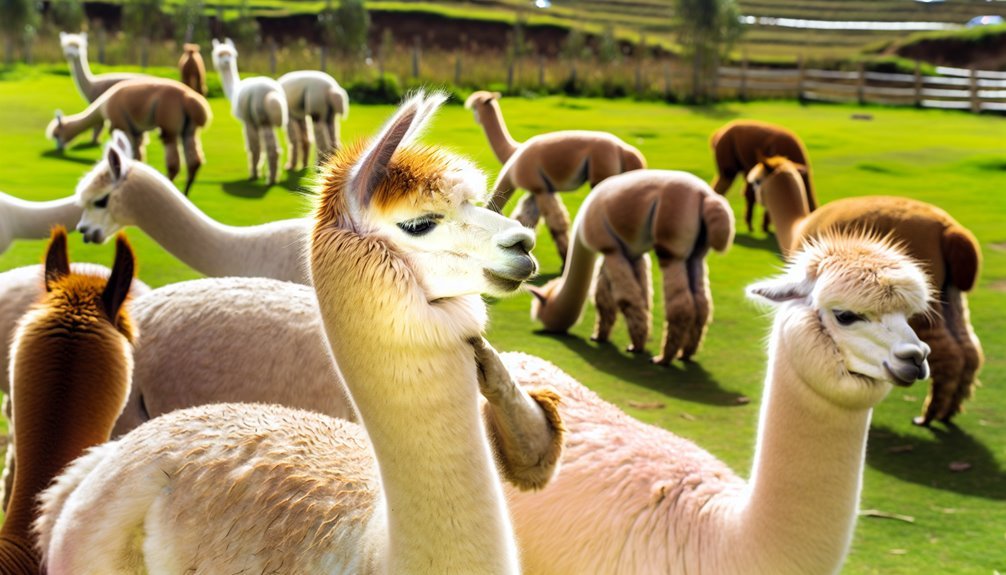

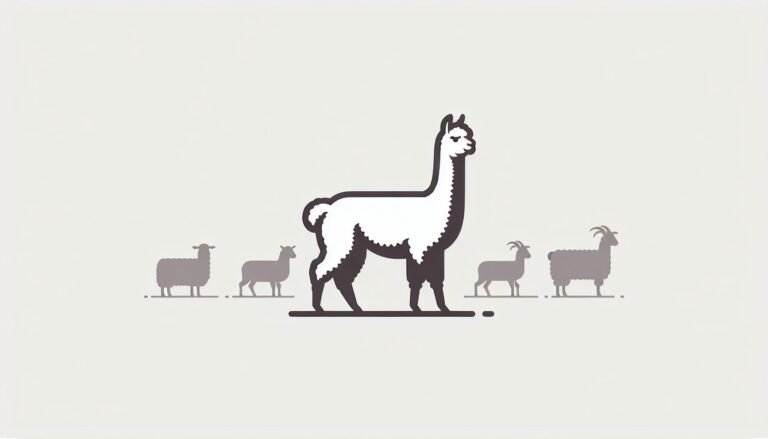

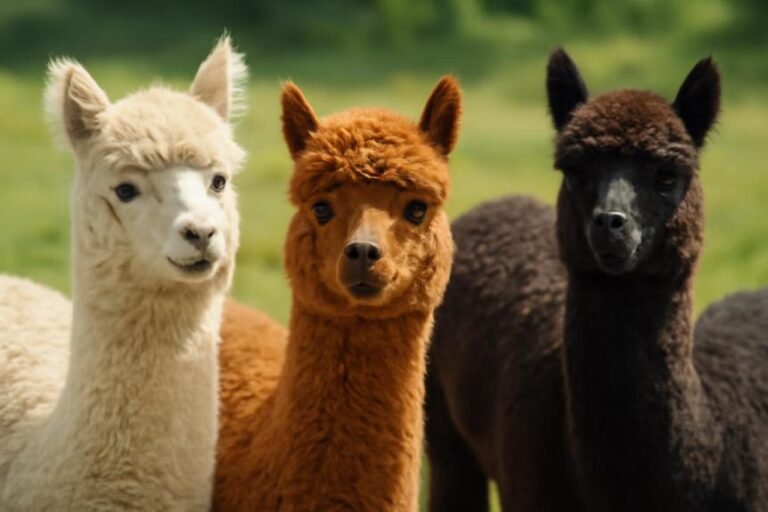

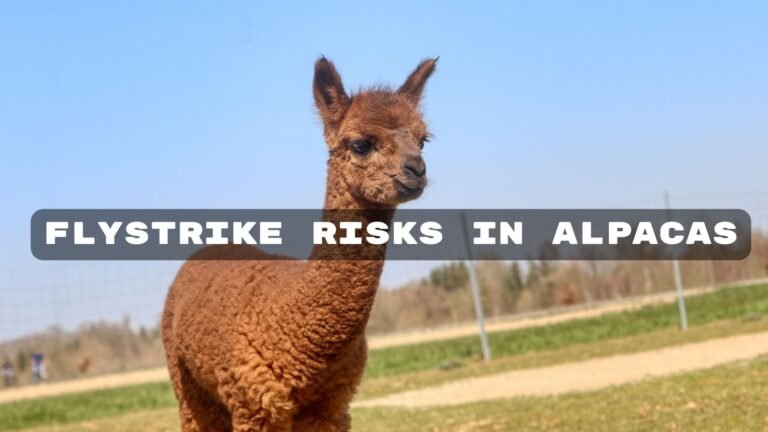
Our picks
Alpaca & Wool Felted Sole Inserts: Comfy Upgrade?
Best Alpaca Socks for Hiking: Ultimate Comfort and Durability on Trails
Best Alpaca Halter for Comfort and Control